Addiction recovery is a complex and challenging process, with different paths working for different people. One approach gaining recognition in medical and rehab facilities across the country is Medication-Assisted Treatment (MAT). By combining FDA-approved medications with counseling and behavioral therapies, MAT is proving to be a powerful ally for individuals struggling with substance use disorders. But how does it work, and who can benefit from it?
This guide explores how MAT operates in addiction recovery programs and the ways it supports individuals on their path to sobriety.
What Is MAT and How Does It Work?
Medication-Assisted Treatment (MAT) is an evidence-based approach to treating substance use disorders by integrating medication with therapy. The medications used in MAT work by reducing cravings and withdrawal symptoms associated with drugs like opioids and alcohol. They help stabilize individuals, making it easier for them to participate in counseling, build life skills, and focus on recovery.
Some of the most common medications used in MAT include:
- Methadone: Reduces withdrawal symptoms and cravings for opioids.
- Buprenorphine (Suboxone): Blocks the effects of opioids while reducing cravings.
- Naltrexone (Vivitrol): Prevents the euphoric effects of opioids or alcohol.
- Disulfiram (Antabuse): Causes unpleasant effects when alcohol is consumed, discouraging its use.
Unlike outdated myths suggesting that MAT is “trading one addiction for another,” MAT has been scientifically proven to increase treatment retention rates and reduce the risk of relapse and overdose.
Who Benefits from MAT?
MAT is particularly effective for individuals struggling with opioid and alcohol addiction, but its benefits extend beyond physical stabilization. It provides a pathway for people to regain control of their lives when addiction has made it feel impossible. Those who benefit the most from MAT include:
- People with Severe Substance Use Disorders
MAT plays a critical role for individuals with intense cravings and withdrawal symptoms that interfere with their ability to stay sober.
- Individuals at Risk of Relapse
MAT provides an added layer of support, helping to reduce the triggers that lead many people back to substance use.
- People in Recovery Looking for Stability
Many individuals face psychological challenges when recovering from long-term addiction. MAT can help them manage these challenges, so they can focus on healing and rebuilding.
- Those Requiring Personalized Care
Since no two journeys in recovery are alike, MAT allows professionals to craft a customized treatment plan tailored to each patient’s specific needs.
How Is MAT Integrated into Facilities?
MAT is not a stand-alone treatment; it is most effective when combined with additional support systems offered in addiction treatment facilities. These include:
- Counseling and Therapy: Facilities integrate evidence-based approaches like cognitive-behavioral therapy (CBT) to help individuals address the roots of their addiction, build coping mechanisms, and instill long-lasting habits.
- Regular Monitoring: Patients on MAT receive regular evaluations to ensure their medications are used effectively and safely.
- Group Support and Education: Many facilities leverage support groups and education programs to build a sense of community and shared progress among individuals in recovery.
MAT enables treatment centers to take a holistic, patient-centered approach, enhancing both immediate and long-term outcomes for those in their care.
The Road Ahead
While addiction recovery looks different for everyone, Medication-Assisted Treatment continues to transform lives by addressing both the physical and emotional components of addiction. This comprehensive approach makes achieving sobriety more manageable and sustainable for many.
If you or a loved one are considering MAT as part of your recovery plan, reach out to Arrowood Addiction Treatment Center today. Their experienced team offers personalized care, guidance, and support every step of the way.

